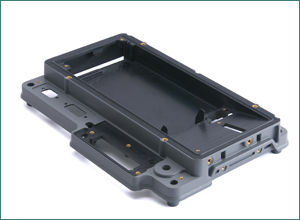So, rapid prototyping technology helped your company develop your latest line extension in a fast and efficient manner. But, now it’s time to talk about actual production, which can be quite an intimidating process.
Production vs. Prototype
All the creativity and input from your staff and customers finally becomes reality when an engineered new part is produced after the prototyping phase. This is an exciting moment. Following the reworking of the prototype, your team now needs to analyze how easily this prototype can be produced. It needs to be produced as inexpensively as possible.
Rapid Prototyping
Rapid prototyping technologies can help bridge the gap between prototype and production services. Designers and engineers using this technology can develop and refine the designs further, while analyzing the challenges and costs of final production.
The entire prototyping process can take place with the help and input of the customer. This will help bring the finished part closer to final production and prevent the project from returning to the drawing board once you’ve reached the production phase.
Short Runs Before Mass Production
Molds developed during prototyping can also be used to make a limited number of parts to test the market. You don’t need to commit to producing a million parts from the beginning of production. Although less-expensive molds won’t hold up to a large number of copies, you can produce enough pieces to see if they are going to make a splash.
Once you’ve seen some sales figures and collected feedback from your most trusted customers, you can return to the prototyping phase, make some tweaks and then start a larger production with more confidence and reduced risk.
When it comes to product development, a balancing act between creativity and cost must be attained. The closer you can bring that new part to production without actually diving into a full-scale production, the more time and money you will save.

